This site hopefully gives you an insight to the insulators used in Britain. I will start by saying there is very little glass
to be found here, only a few power lines use them. Porcelain is the main material used.
Enough chat as I think it's the pictures you've come to see.
NEW I've added a high resolution gallery showing surviving poles with insulators. This will be updated
frequently and these show typical poles in the UK. NEW
Another excellent UK insulator site is Teleramics
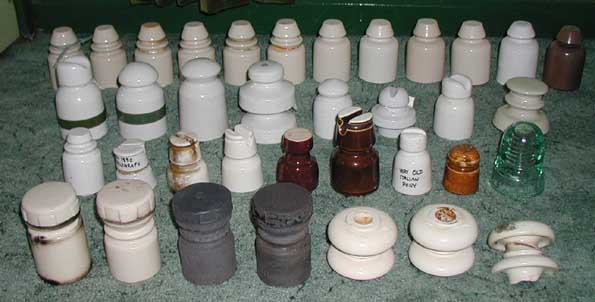
This is my collection so far (it keeps growing all the time). I also have a large delta which I've shown separately
later.
Front row - The first four are British screw top insulators
used at the end of a run of wire. The one on the left is an older type with a single wire groove. The second one is a later type with
two wire grooves. The third and fourth are the same but are made from bakelite. The three on the right are spools.
Second row - The first six are from Sweden. The first one is a cordeaux style very similar to the British pieces in the
back row. The seventh piece is an old Italian pony. The eighth one is an old Locke piece. The one on the right is a CD145
by HG Co.
Third row - These are all German pieces.
Back row - These are all standard British cordeaux. The ones on the left are the later type with two wire grooves. The
one on the extreme right is brown which indicates a higher voltage line.
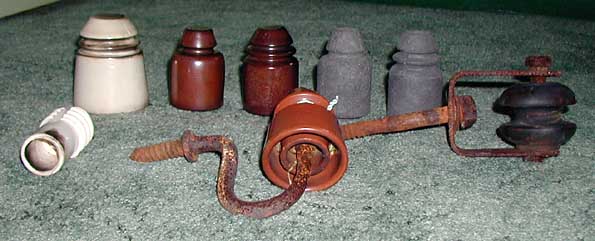
These are some insulators I have acquired since the previous picture was taken.
The two pieces on the left form a double
shed insulator.
The four pieces at the back are small cordeaux, the left two are brown porcelain and the right two are
bakelite with single wire grooves and double wire grooves.
The piece at the front remains attached to its hook which
screws into the side of a pole.
The piece on the right is used for mains voltage power lines which run for short distances.
This one also screws into the side of a pole.
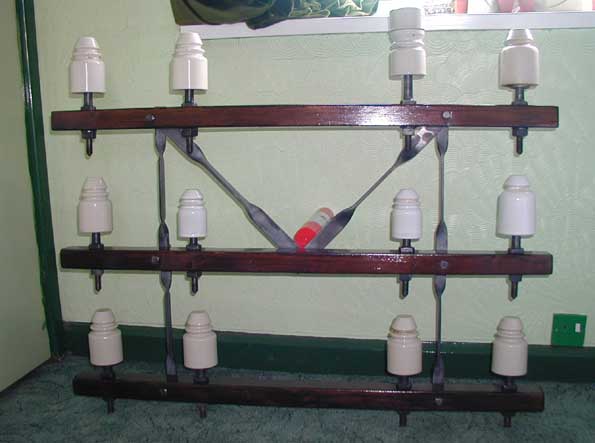
This is my crossarm with a selection of British cordeaux. The third one on the top row has a large screwtop. All the parts
are genuine except for the wood which was pretty rotten so I decided to make my own. The dimensions of the wood are not right as I only had thin pieces.
The length is right but they should be thicker. This can be seen by looking at the bottom of the spindles and the long length
showing below the nut (compare this with the next picture). This has one advantage, it cuts down on the weight.
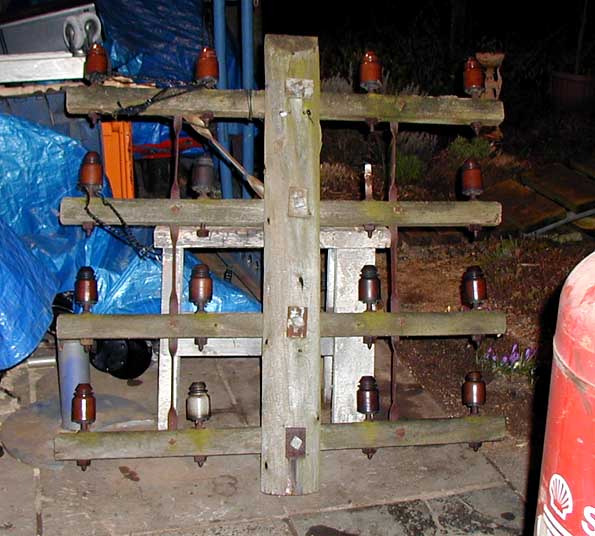
This is a pole that I have cut down. The insulators are double groove cordeaux in the smaller size. They all have brown
glazing except the one second from left on the bottom arm.
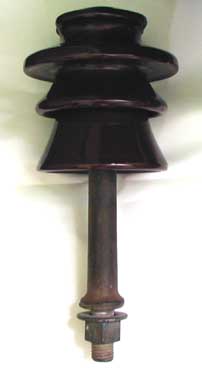
This is from a 20kv power line and I obtained this when the insulators were being changed.
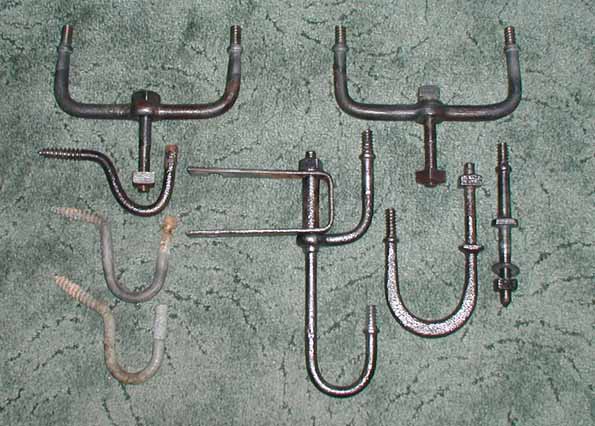
This is my collection of spindles and hooks which the insulators screw into. The three on the left are from Sweden (the
bottom two have not yet been polished). The large piece in the centre can be seen below before I polished it. The one on the right
is the standard spindle which goes in the crossarm.
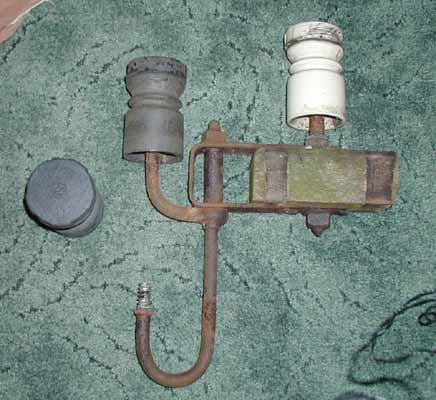
This is the double hook before I polished it.
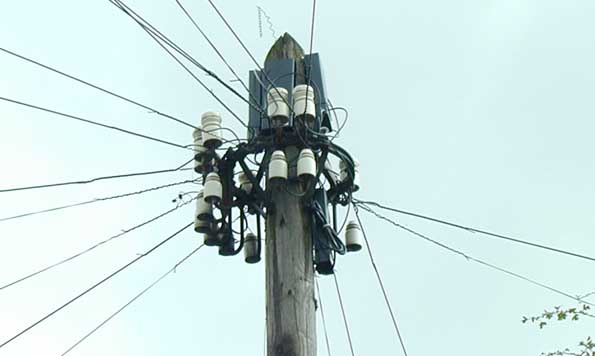
This is a typical pole found on suburban streets. The insulators are arranged in a circle with each house having a wire from the top and bottom
rows. I'm not quite sure why each house needs two. The types of insulator on each row is different. The ones on the top row are the screw top type.
As you can see, none of the insulators seem to have a wire attached. Sadly this is now becoming commonplace and these poles are now being replaced by
insulator-less ones with the wires being attached to a metal ring.
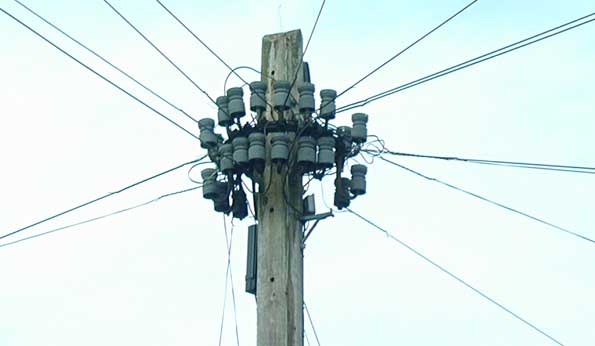
Another suburban pole, this time the insulators are black. They are made of bakelite instead of porcelain.
This pole too has none of the insulators in use, maybe I should try out my snagalator.

This rural pole has 230v power lines at the top and telephone lines at the bottom. It is rare to see telephone insulators still in service on poles
like this, the wires are nowadays just tied to the brackets.
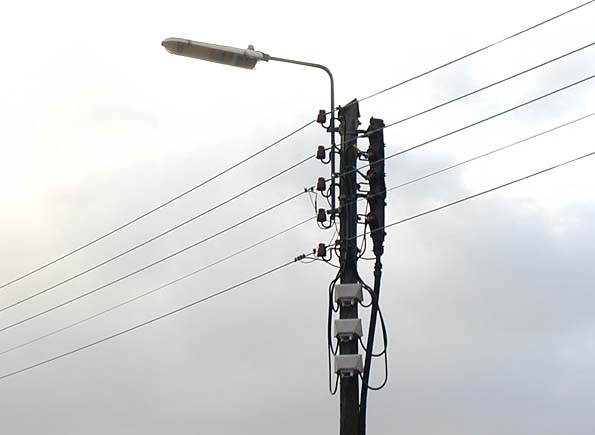
This pole is also carrying 230v wires but the insulators used are rarer than those in the previous picture. The streetlamp
appears to take its feed from the centre wire.
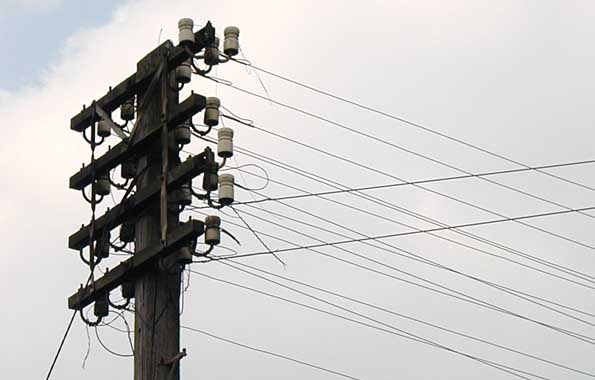
This pole still has wires attached to most of its insulators.
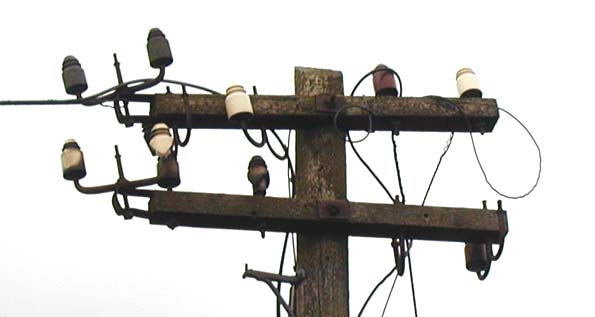
This is the state of most crossarms nowadays. A selection of standard cordeaux, some damaged, on a decaying
pole.
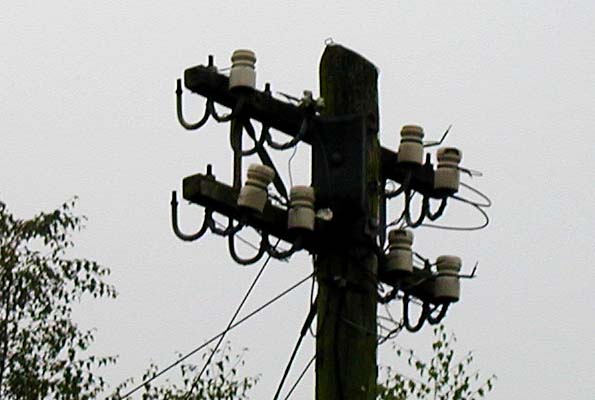
This is another scruffy pole. Two of the insulators have damaged screw tops whilst another two have no tops at all.
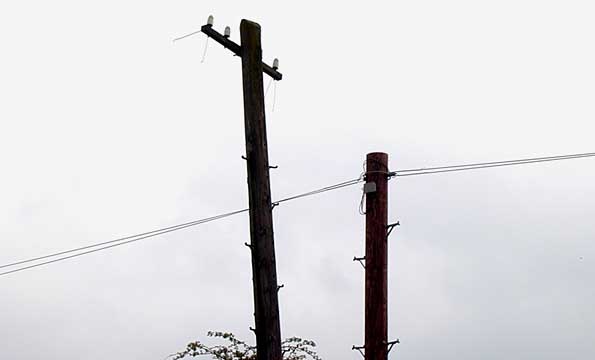
This crossarm pole is awaiting removal as its replacement is now in use. New poles no longer have insulators, they use a
metal ring which the wires attach to.
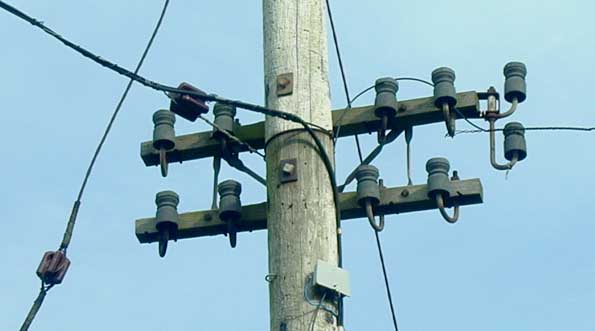
This twin crossarm pole has ten terminal insulators. As usual there are no wires connected to any of the insulators.
The pole appears to have been extended as can be seen by the join between the two crossarms.
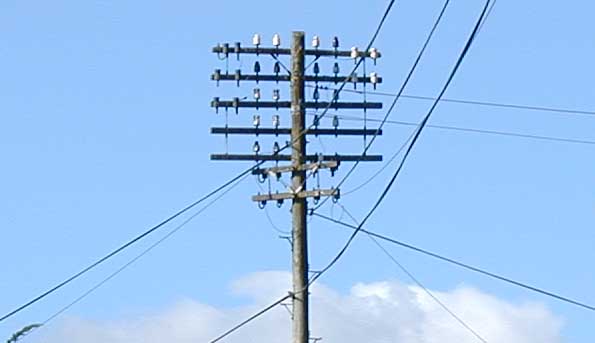
This is one of the largest crossarm poles that I've seen still standing. As usual there seems to be no wires attached to the insulators and the pole
is too high for my snagalator to reach. There is a railway running next to this pole so this could be the reason for its size. The lower 2 crossarms have the insulators
on U brackets, these are for terminal insulators used at the end of a run of wire.
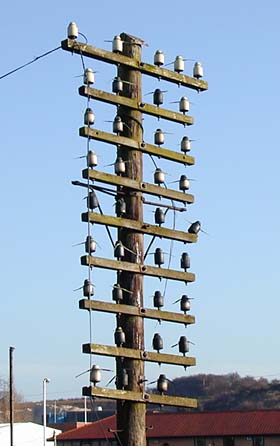
This is another large pole and is typical of those found on railways. This example is beside a preserved railway but only one wire remains and even
this is not connected to any of the insulators.
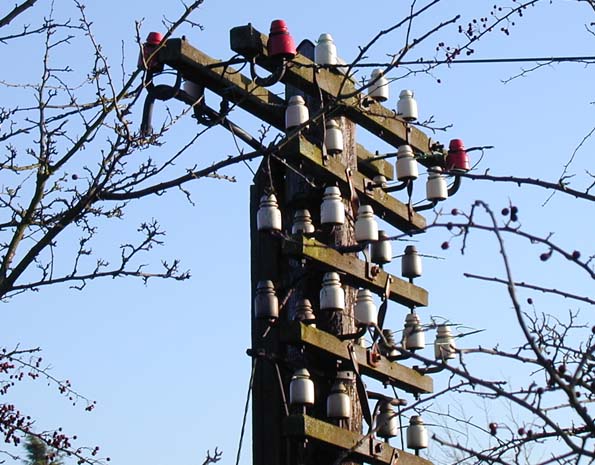
This pole is on the same line and the single wire can be seen wrapped around some of the brackets. There is a wider
range of insulators on this pole; the red ones being particularly rare.
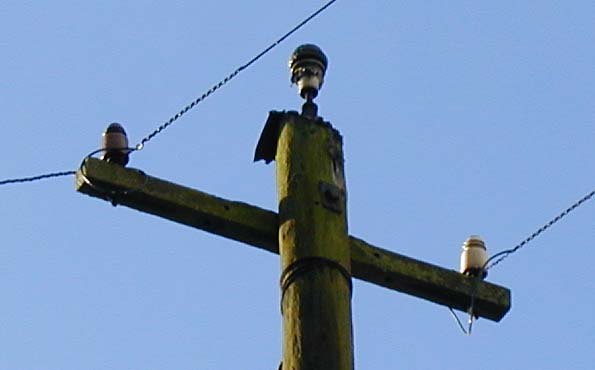
The insulator in the middle is an inverted cone which dates back to the early 20th century. The other two are ordinary cordeaux.
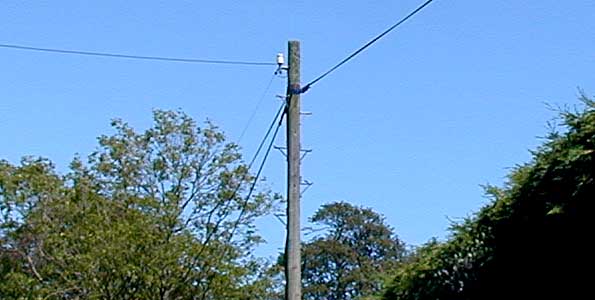
This pole has a single insulator which is used to connect a run of wire to a house.
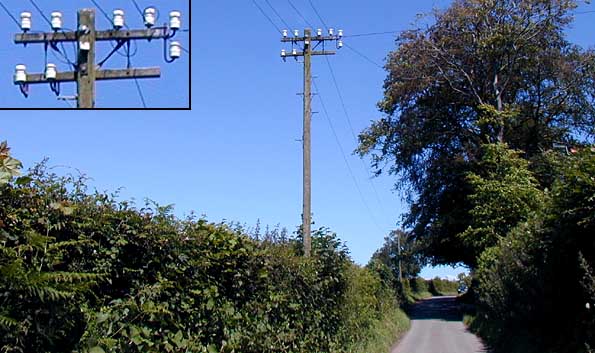
This pole is full of screw tops which, from the enlarged picture, don't appear to be the normal type. The bottom left one
in particular is short and wide. Its nice to see wires attached to most of them.
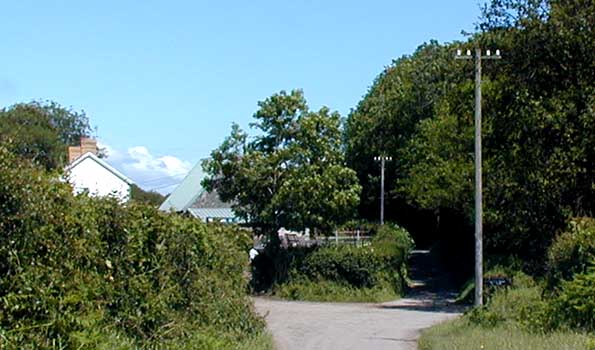
This is an idyllic country scene with two single crossarm poles full of porcelain.
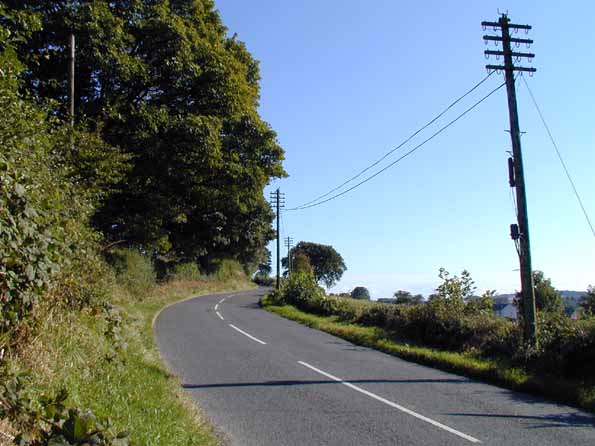
This is a row of poles alongside a lane in Scotland. The pole on the right is a terminal pole with U brackets. The
insulators would have been screwtops but they've all been taken.
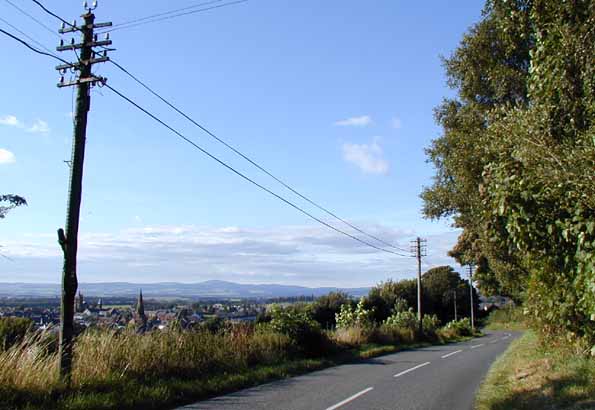
Looking in the opposite direction shows a panoramic view over a nearby town. The insulators on these poles are still in
place.
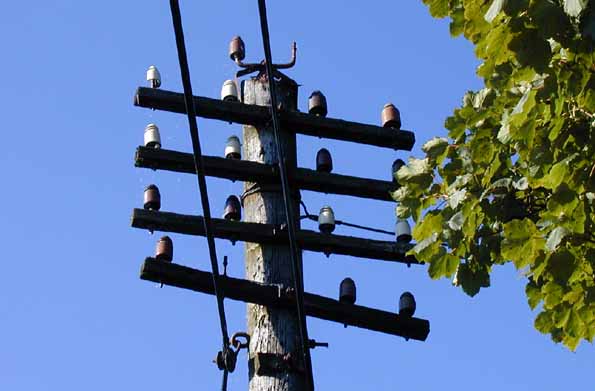
This is a closeup of one of the poles. The insulators are all small cordeaux in both single and double groove varieties.
The top left one looks worse for wear. None of them are wired which is typical of most poles nowadays.
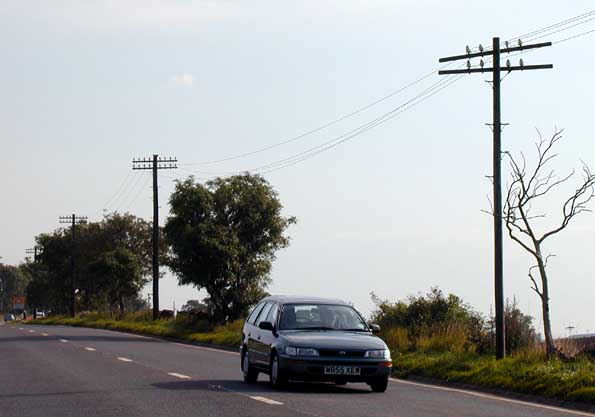
These next five pictures are of the same row of poles which can be found on the A1 to the south east of Edinburgh. They
cover a distance of about 1 mile and the wires just hang loose on the first and last poles.
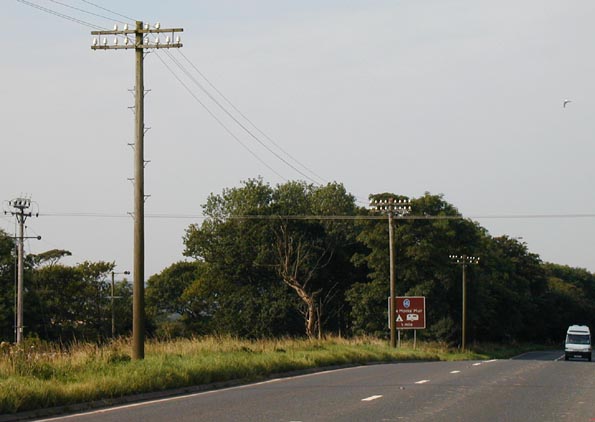
Some electricity poles are visible in this scene and the wires pass mighty close to the telephone ones.
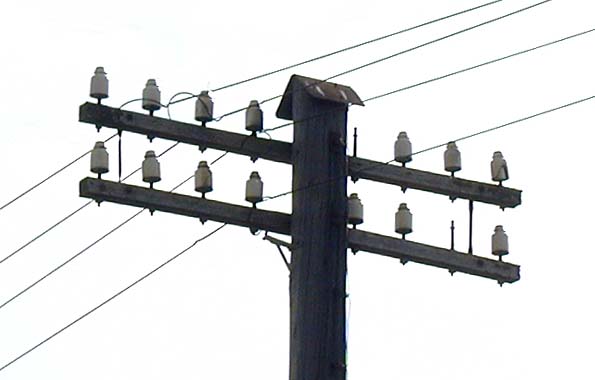
This is a close up of one of the poles showing the cordeaux insulators. The top right one is damaged.
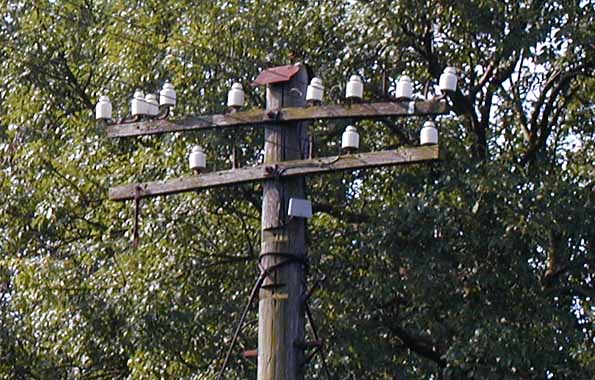
This is another close up. Some of the insulators on the top crossarm are on double brackets. There would have been another
two crossarms as the cut outs in the pole show.
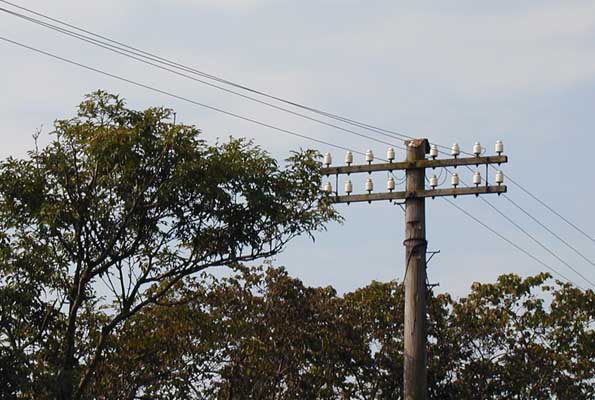
This pole also would have had four crossarms.
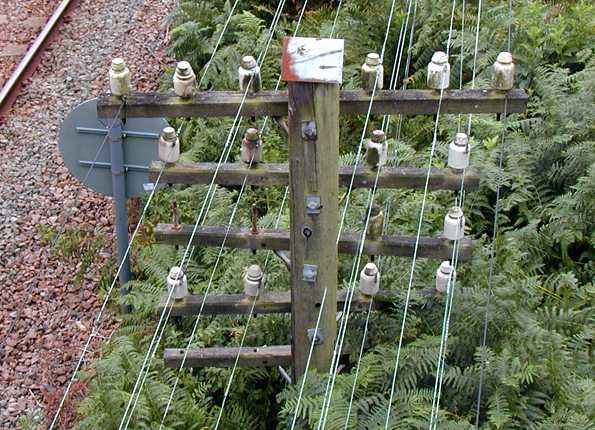
This is a pole on a main line railway. Poles like this are extinct on the railway network and are only found on
preservation and heritage lines, or so I thought!
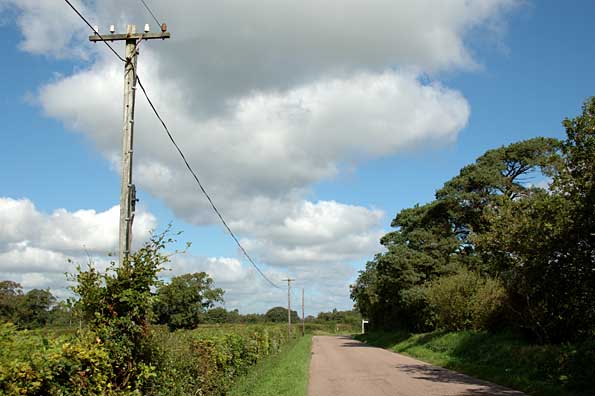
This is a nice row of poles in a pleasant country setting. On the crossarm are four small cordeaux. The one on the right is brown saltglaze or stoneware.
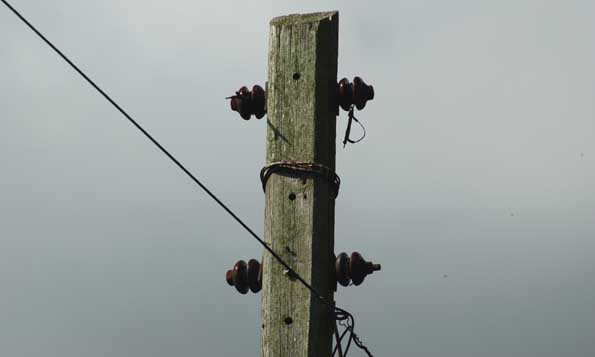
Here we have four spools which are mounted directly to the side of the pole. Spools are used for electricity but the wire on the pole is telephone - strange.
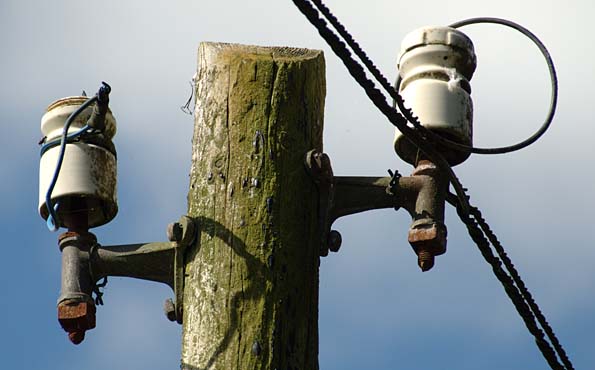
Here we have two screwtop insulators (potheads) mounted on standard straight spindles which are fixed to adaptors to allow them to go on the side of the pole. These are
usually made from aluminium and this looks like the case here as the nuts at the bottom are rusty yet the adaptors are still grey.
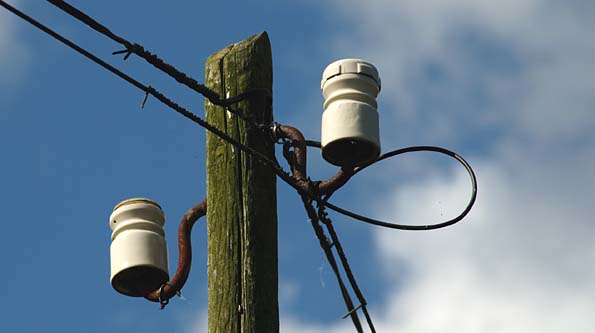
Here's another pole on the same line. This time we have swan neck brackets. On both these poles the left hand insulators have missing tops.
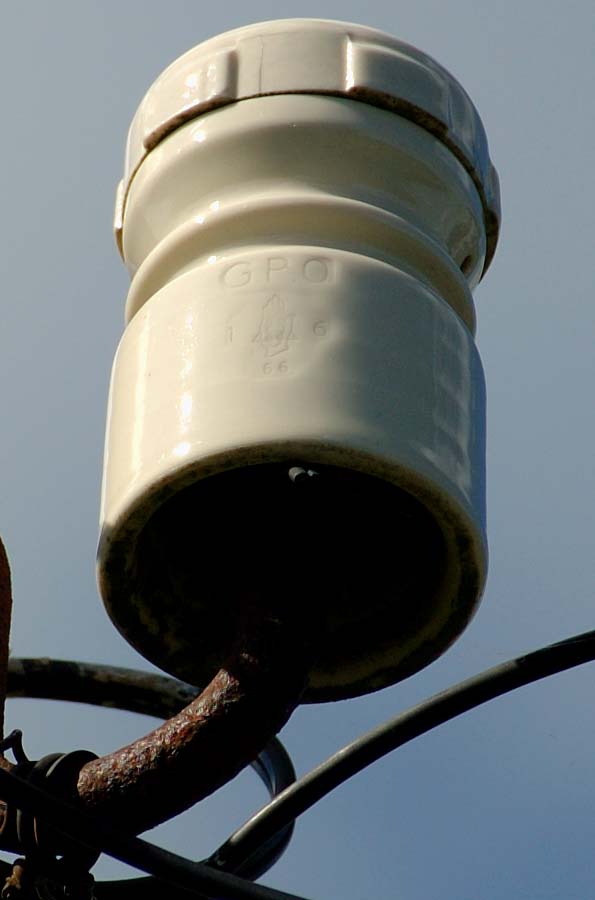
Here's a closeup of the last picture. The markings on this insulator show it was made by Wade in 1966. I believe 16 was the pattern number. GPO is the General Post
Office.




































